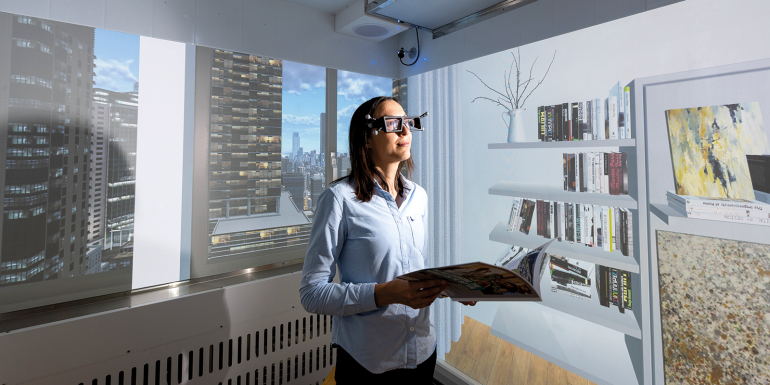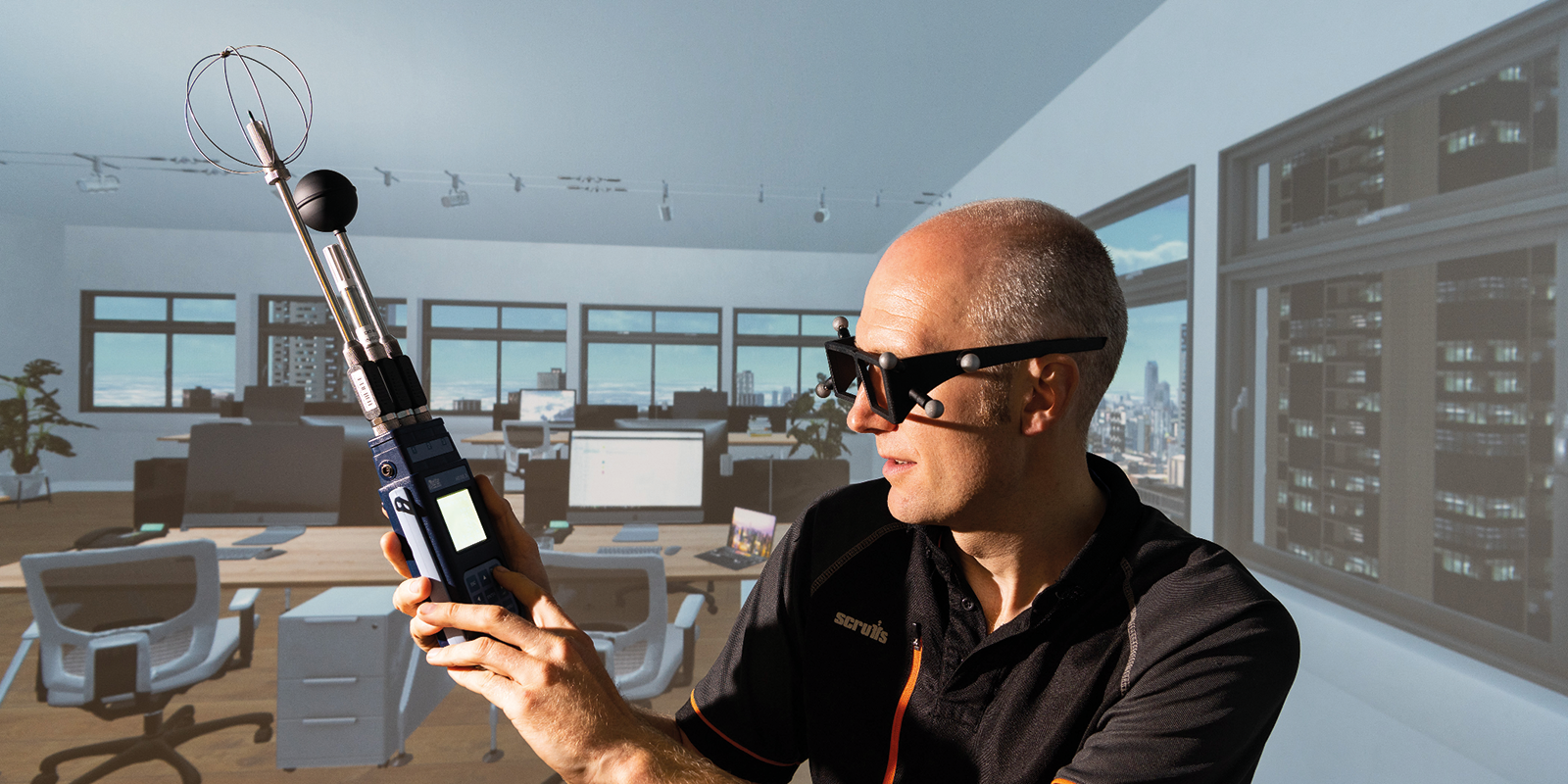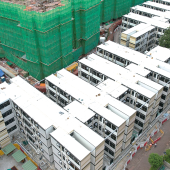Future gazing

The University of Bath has an innovative way to use virtual reality to find out how people interact with buildings.
A moving chamber equipped with virtual reality projection will aid a study of people’s reactions to different buildings, including swaying skyscrapers and bridges. A ‘VSimulator’ uses virtual reality projection and a moving hydraulic platform to immerse people in a range of lifelike environments. The University of Bath hopes to investigate not only how people react to buildings, but also how they are affected by them.
Combined with lighting, sound, temperature and airflow controls, the VSimulator platform’s sophisticated projected virtual reality (VR) and movement capabilities will allow researchers to investigate a range of questions about responses to the built environment. These include how to design buildings to boost the mood of their occupants, how people’s productivity can be affected by working in tall buildings and what level of movement is acceptable in a footbridge or train carriage.
VR projections on the walls of the 3x4m chamber, combined with motion-tracking glasses, will allow the space to be realistically configured as an office, apartment, hotel room or hospital ward, giving the researchers the chance to create convincing ‘mixed reality’ simulations.
Potential for future gain
“The VSimulators project will also support much needed research into making design guidelines fit for purpose and exploration into the use of lightweight materials as part of a move towards sustainable construction methods,” notes Andrew Wyllie President of the Institution of Civil Engineers. He says that use of technology such as VSimulators, “Will provide a catalyst for change within the built environment… drawing together a range of industry and academic sectors to place human responses at the core of design, helping to transform the places in which we live, work, study, are entertained and travel.”
The integrated system provides capabilities well suited to a wide range of multi-discipline research projects and the team has already identified a number of potential areas of use including:
Built environment – how to transform construction processes, make modular design more accessible and reduce embodied energy (the amount of resources used in building structures), by refining the design by focusing on better understanding needs of people using a building or piece of infrastructure
Transport – exploring impacts of acceleration, deceleration and motion in transport – including human response to vibrations, assisted driving and balance
Human factors & comfort – better understanding of how people perceive and respond to their environment, ensuring structures are comfortable and fit for purpose
Vibration engineering – evaluating the impact of vibration of structures, machinery and other engineered facilities, and developing design recommendations to ensure human comfort
Health & wellbeing – evaluating how people move, how they balance and how they respond to their surroundings including moving structures (such as a swaying bridge)
Immersive reality – using state-of-the-art virtual reality technology aligned to the motion platform and other controls to create an immersive experience for one or more people
Data science & analytics – the facility can co-ordinate multiple information feeds, contributing to the development of new ways of visually interpreting, analysing and using complex data
Creative industries – developing new creative techniques, as a tool for expression, performance and storytelling.

Making it realistic
Dr Antony Darby, Head of Civil Engineering at the University of Bath and one of the lead investigators on the VSimulators project, said the team had worked hard to ensure it can convincingly recreate a range of situations. “The issues we are researching, for example how much sway is acceptable in a very tall building before people inside start to feel negative effects, require highly immersive simulations, so we’ve brought together a diverse set of technologies to create a facility that is globally unique.”
Studies into the acceptability of movement and vibrations in buildings or structures will help authorities develop future guidelines for architects and civil engineers. In addition, the VSimulators will also be made available for industrial research and commercial use. Research teams have already identified more than 50 potential applications for the facility, including immersive VR game development, physical rehabilitation and driverless vehicle design.
The project, which is made up of a team of researchers from the Universities of Bath, Exeter and Leicester and supported by collaboration from industrial partners, is funded by a £4.8m infrastructure project grant from the Engineering and Physical Sciences Research Council (EPSRC). The chamber at Bath is the first of two VSimulator platforms, and the second complementary facility at the University of Exeter will be launched this year. The project is a strong indication of the direction of travel for the construction industry in embracing the possibilities of technology to enhance
the built environment.
Visit bath.ac.uk/research to participate in the research project.
Find out more at vsimulators.co.uk or watch bit.ly/vSIMS










